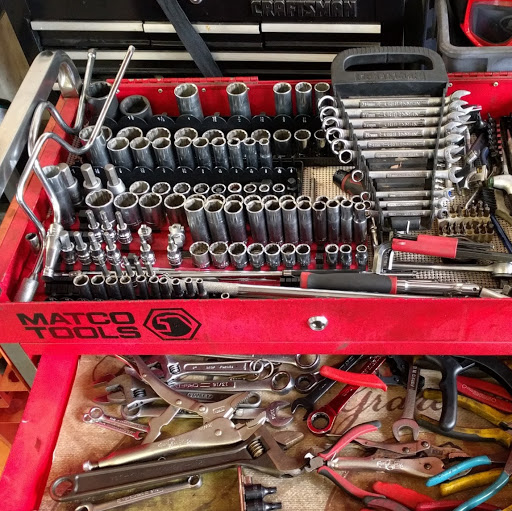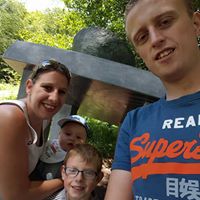Paul J Mcclure
age ~65
from Fort Collins, CO
- Also known as:
-
- Paul John Mcclure
- Paul Mc
- Phone and address:
-
2516 Bedford Ct, Fort Collins, CO 80526
(970)4071492
Paul Mcclure Phones & Addresses
- 2516 Bedford Ct, Fort Collins, CO 80526 • (970)4071492
- Greeley, CO
- Austin, TX
- Colorado Springs, CO
- 2605 Ridgecrest Rd, Fort Collins, CO 80524
Work
-
Company:Dell inc - Round Rock, TXJul 2004
-
Position:Technical support sr. specialist
Education
-
School / High School:CALIFORNIA POLYTECHNIC UNIVERSITY1985
-
Specialities:Bachelor of Science in Electronic Design Engineer
Isbn (Books And Publications)


License Records
Paul E Mcclure
Address:
1620 Montview Blvd, Greeley, CO 80631
License #:
879 - Expired
Issued Date:
Oct 11, 1947
Renew Date:
Apr 2, 1983
Expiration Date:
Apr 2, 1983
Type:
Professional Land Surveyor
Paul John Mcclure
Address:
2516 Bedford Ct, Fort Collins, CO 80526
License #:
13267 - Expired
Issued Date:
May 8, 2012
Expiration Date:
Sep 25, 2013
Type:
Marriage and Family Therapist Candidate
Paul John Mcclure
Address:
2516 Bedford Ct, Fort Collins, CO 80526
License #:
1096 - Active
Issued Date:
Sep 25, 2013
Renew Date:
Sep 1, 2015
Expiration Date:
Aug 31, 2017
Type:
Marriage and Family Therapist
Paul John Mcclure
Address:
2516 Bedford Ct, Fort Collins, CO 80526
License #:
10778 - Expired
Issued Date:
Nov 21, 2008
Renew Date:
Dec 15, 2011
Expiration Date:
Aug 31, 2013
Type:
Registered Psychotherapist
Name / Title
Company / Classification
Phones & Addresses
Director
XIDEX CORPORATION
Mfg Electrical Measuring Instruments · Laboratories-Research & Develo · Research & Development in Biotechnology
Mfg Electrical Measuring Instruments · Laboratories-Research & Develo · Research & Development in Biotechnology
8906 Wall St, Austin, TX 78754
(512)3390608, (512)3399497
(512)3390608, (512)3399497
Director, President, Treasurer, Secretary
PARADIGM CORPORATION
7505 Greenhaven Dr, Austin, TX 78757
24523 DETROIT, LLC
Us Patents
-
System And Method Of Multi-Dimensional Force Sensing For Scanning Probe Microscopy
view source -
US Patent:6666075, Dec 23, 2003
-
Filed:Jun 13, 2001
-
Appl. No.:09/881650
-
Inventors:Vladimir Mancevski - Austin TX
Davor Juricic - Austin TX
Paul F. McClure - Austin TX -
Assignee:Xidex Corporation - Austin TX
-
International Classification:G01B 528
-
US Classification:73105
-
Abstract:A scanning probe microscopy tool is provided with a force sensor that simultaneously measures more than one component of a surface force. The tool is comprised of an oscillator, a tip, a mechanical actuator, a sensing system, and a feedback control system. The oscillator has a selected shape, dimensions ratio, and /or material composition such that the oscillator comprises a first resonant mode for a first direction, wherein a first resonance of the first resonance mode can be altered by a surface force interaction between the tip and the sample in the first direction; and a second resonant mode for a second direction, wherein a second resonance of the second resonant mode can be altered by the surface force interaction between the tip and the sample in the second direction. The sensing system is adapted to sense the alterations in the first and second resonances, is adapted to provide a first output based on the alterations in the first resonance, and is adapted to provide a second output based on alterations in the second resonance. The feedback control system is adapted to control the actuator based on the first and second outputs.
-
Caliper Method, System, And Apparatus
view source -
US Patent:6955078, Oct 18, 2005
-
Filed:Apr 1, 2002
-
Appl. No.:10/115274
-
Inventors:Vladimir Mancevski - Austin TX, US
Paul McClure - Austin TX, US -
Assignee:Xidex Corporation - Austin TX
-
International Classification:G01B021/30
G01B011/30 -
US Classification:73105
-
Abstract:A caliper atomic force microscope (AFM) comprises two AFM probes (each comprised of an oscillator and an attached tip) that operate on a sample in a coordinated manner. The coordinated operation of the AFM probes may be spatially or temporally coordinated. The result of the coordinated operation may be an image of the sample or a dimensional measurement of an unknown sample. The probes of the caliper AFM may be tilted, or the tips may be tilted at a non-orthogonal angle with respect to the probes, so as to enable the tips to access vertical sample surfaces or to enable the tips to touch each other. The tip shapes may include conical, boot-shaped, cylindrical, or spherical and materials from which the tips are fabricated may include silicon or carbon nanotubes. The oscillators may be beveled to allow the tips to operate in close proximity or in contact without interference of the oscillators. The disclosure of the present invention is discussed in terms of an atomic force (van der Waalls) interaction.
-
Method Of Calibrating A Caliper Afm
view source -
US Patent:7493794, Feb 24, 2009
-
Filed:Aug 6, 2007
-
Appl. No.:11/890405
-
Inventors:Vladimir Mancevski - Austin TX, US
Paul McClure - Austin TX, US -
Assignee:Xidex Corporation - Austin TX
-
International Classification:G01N 13/16
G01B 21/30 -
US Classification:73 179, 73 189
-
Abstract:A caliper atomic force microscope (AFM) comprises two AFM probes (each comprised of an oscillator and an attached tip) that operate on a sample in a coordinated manner. The coordinated operation of the AFM probes may be spatially or temporally coordinated. The result of the coordinated operation may be an image of the sample or a dimensional measurement of an unknown sample. The probes of the caliper AFM may be tilted, or the tips may be tilted at a non-orthogonal angle with respect to the probes, so as to enable the tips to access vertical sample surfaces or to enable the tips to touch each other. The tip shapes may include conical, boot-shaped, cylindrical, or spherical and materials from which the tips are fabricated may include silicon or carbon nanotubes. The oscillators may be beveled to allow the tips to operate in close proximity or in contact without interference of the oscillators. The disclosure of the present invention is discussed in terms of an atomic force (van der Waalls) interaction.
-
Caliper Method, System, And Apparatus
view source -
US Patent:20060037379, Feb 23, 2006
-
Filed:Mar 18, 2005
-
Appl. No.:11/084336
-
Inventors:Vladimar Mancevski - Austin TX, US
Paul McClure - Austin TX, US -
International Classification:G01B 21/30
-
US Classification:073001890
-
Abstract:A caliper atomic force microscope (AFM) comprises two AFM probes (each comprised of an oscillator and an attached tip) that operate on a sample in a coordinated manner. The coordinated operation of the AFM probes may be spatially or temporally coordinated. The result of the coordinated operation may be an image of the sample or a dimensional measurement of an unknown sample. The probes of the caliper AFM may be tilted, or the tips may be tilted at a non-orthogonal angle with respect to the probes, so as to enable the tips to access vertical sample surfaces or to enable the tips to touch each other. The tip shapes may include conical, boot-shaped, cylindrical, or spherical and materials from which the tips are fabricated may include silicon or carbon nanotubes. The oscillators may be beveled to allow the tips to operate in close proximity or in contact without interference of the oscillators. The disclosure of the present invention is discussed in terms of an atomic force (van der Waalls) interaction. Other interaction forces are contemplated, such as electrostatic force, magnetic force, and tunneling current. The caliper AFM may be calibrated with the help of a sample with known dimensions or by touching the probe tips. The tip-to-tip calibration enables absolute measurements without the need for a reference artifact, and it enables in-line calibration that may be performed during the measurement process.
-
Metallic Fuse With Optically Absorptive Layer
view source -
US Patent:48267856, May 2, 1989
-
Filed:Jan 27, 1987
-
Appl. No.:7/007065
-
Inventors:Paul J. McClure - Colorado Springs CO
Robert E. Jones - Colorado Springs CO -
Assignee:INMOS Corporation - Colorado Springs CO
-
International Classification:H01L 2182
-
US Classification:437174
-
Abstract:A metallic interconnect includes a fuse portion that is readily vaporized upon exposure to the radiant energy of a laser. A layer of optically absorptive material is formed on top of an aluminum based metallic interconnect and together they are formed by a photolithographic and etch technique into a fuse portion. A low energy laser having a Gaussian energy distribution focused on the absorptive layer produces heat in the absorptive layer. The heat is transferred to the underlying aluminum based interconnect. The concentration of energy made possible by the absorptive layer allows the low energy laser to blow the fuse thereby producing an electrical open in the interconnect without damaging surrounding silicon substrate and/or polysilicon structures below or nearby the metal fuse.
-
Metallic Fuse With Optically Absorptive Layer
view source -
US Patent:49358014, Jun 19, 1990
-
Filed:Jan 30, 1989
-
Appl. No.:7/304361
-
Inventors:Paul J. McClure - Colorado Springs CO
Robert E. Jones - Colorado Springs CO -
Assignee:Inmos Corporation - Colorado Springs CO
-
International Classification:H01L 2702
H01L 2348 -
US Classification:357 51
-
Abstract:A metallic interconnect includes a fuse portion that is readily vaporized upon exposure to the radiant energy of a laser. A layer of optically absorptive material is formed on top of an aluminum based metallic interconnect and together they are formed by a photolithographic and etch technique into a fuse portion. A low energy laser having a Gaussian energy distribuution focused on the absorptive layer produces heat in the absorptive layer. The heat is transferred to the underlying aluminum based interconnect. The concentration of energy made possible by the absorptive layer allows the low energy laser to blow the fuse thereby producing an electrical open in the interconnect without damaging surrounding silicon substrate and/or polysilicon structures below or nearby the metal fuse.
-
Semiconductor Contact Silicide/Nitride Process With Control For Silicide Thickness
view source -
US Patent:47849738, Nov 15, 1988
-
Filed:Aug 24, 1987
-
Appl. No.:7/088681
-
Inventors:E. Henry Stevens - Colorado Springs CO
Paul J. McClure - Colorado Springs CO
Christopher W. Hill - Colorado Springs CO -
Assignee:INMOS Corporation - Colorado Springs CO
-
International Classification:H01L 21283
-
US Classification:437200
-
Abstract:A titanium silicide/titanium nitride process is disclosed wherein the thickness of the titanium nitride can be regulated with respect to the titanium silicide. In particular, a control layer is formed in the contact opening during a reactive cycle to form a relatively thin (20 to 50 angstrom) control layer. Titanium is thereafter deposited and in another thermal reaction the control layer retards the development of titanium silicide without retarding the development of titanium nitride so that the thickness of titanium silicide is kept small. A double titanium process can also be used.
-
Three-Dimensional Authentication And Identification Methods, Devices, And Systems
view source -
US Patent:20180374103, Dec 27, 2018
-
Filed:Feb 19, 2018
-
Appl. No.:15/899330
-
Inventors:- Austin TX, US
Paul Frederick McClure - Austin TX, US
Frank Nicholas Bruno - Austin TX, US -
Assignee:Authenticate, LLC - Austin TX
-
International Classification:G06Q 30/00
H04L 9/08
G06K 19/06
G06K 19/10
G06K 19/077
G06Q 10/08 -
Abstract:In some embodiments, an apparatus includes a tag that may include an encapsulant and a plurality of three-dimensional objects randomly oriented within the encapsulant. Each three-dimensional object may include a plurality of characteristics defining at least one statistically unique signature. At least one of the characteristics may be dependent on the orientation of the object. In some instances, the plurality of three-dimensional objects may also be randomly distributed within the encapsulant, and at least one of the characteristics defining at least one statistically unique signature may be dependent on the distribution of the objects.
Medicine Doctors

Paul McClure, Fort Collins CO
view sourceSpecialties:
Psychotherapist
Address:
2001 S Shields St, Fort Collins, CO 80526
125 Crestridge St, Fort Collins, CO 80525
125 Crestridge St, Fort Collins, CO 80525
Resumes

Psychotherapist
view sourceLocation:
Fort Collins, CO
Industry:
Mental Health Care
Work:
Summitstone Health Partners Dec 2011 - Sep 2014
Family Therapist
Mindful Insights Dec 2011 - Sep 2014
Psychotherapist
Hewlett-Packard Aug 1994 - Aug 2007
Master Engineer
Family Therapist
Mindful Insights Dec 2011 - Sep 2014
Psychotherapist
Hewlett-Packard Aug 1994 - Aug 2007
Master Engineer
Education:
Colorado State University 2007 - 2010
Master of Science, Masters, Family Therapy Hakomi Institute 2005 - 2007
Colorado State University 1982 - 1985
Bachelors, Bachelor of Science, Mathematics, Electrical Engineering, Physics
Master of Science, Masters, Family Therapy Hakomi Institute 2005 - 2007
Colorado State University 1982 - 1985
Bachelors, Bachelor of Science, Mathematics, Electrical Engineering, Physics
Skills:
Psychology
Family Therapy
Psychotherapy
Adolescents
Therapists
Emdr
Mental Health
Group Therapy
Mental Health Counseling
Cbt
Counseling Psychology
Treatment
Clinical Supervision
Case Managment
Community Outreach
Crisis Intervention
Public Speaking
Stress Management
Social Services
Case Management
Family Therapy
Psychotherapy
Adolescents
Therapists
Emdr
Mental Health
Group Therapy
Mental Health Counseling
Cbt
Counseling Psychology
Treatment
Clinical Supervision
Case Managment
Community Outreach
Crisis Intervention
Public Speaking
Stress Management
Social Services
Case Management

Paul Mcclure
view source
Paul Mcclure
view source
Paul Mcclure
view source
Paul Mcclure
view sourceLocation:
United States

Paul Mcclure
view sourceLocation:
United States

Paul Mcclure Round Rock, TX
view sourceWork:
Dell Inc
Round Rock, TX
Jul 2004 to May 2012
Technical Support Sr. Specialist DataEMT
Novato, CA
Aug 2003 to Apr 2004
Sales/Engineering Knickerbockers
Saint Helena, CA
May 2003 to Oct 2003
Bartender/Wait Staff Intelegy Corp
San Ramon, CA
Dec 2001 to Aug 2002
Command Center Coordinator RFMS and Telephony
Jan 2001 to Dec 2001
Technical Consultant ActionFront Data Recovery
Santa Clara, CA
Jul 1999 to Jan 2001
Senior Data Recovery Engineer Committed to Memory
Novato, CA
Aug 1998 to Jul 1999
Technical Consultant / Sales On Track International
San Jose, CA
Oct 1997 to Aug 1998
Senior Data Recovery Engineer Western Digital
Irvine, CA
Jun 1993 to Oct 1997
Tech Support Supervisor! Network Admin
Round Rock, TX
Jul 2004 to May 2012
Technical Support Sr. Specialist DataEMT
Novato, CA
Aug 2003 to Apr 2004
Sales/Engineering Knickerbockers
Saint Helena, CA
May 2003 to Oct 2003
Bartender/Wait Staff Intelegy Corp
San Ramon, CA
Dec 2001 to Aug 2002
Command Center Coordinator RFMS and Telephony
Jan 2001 to Dec 2001
Technical Consultant ActionFront Data Recovery
Santa Clara, CA
Jul 1999 to Jan 2001
Senior Data Recovery Engineer Committed to Memory
Novato, CA
Aug 1998 to Jul 1999
Technical Consultant / Sales On Track International
San Jose, CA
Oct 1997 to Aug 1998
Senior Data Recovery Engineer Western Digital
Irvine, CA
Jun 1993 to Oct 1997
Tech Support Supervisor! Network Admin
Education:
CALIFORNIA POLYTECHNIC UNIVERSITY
1985
Bachelor of Science in Electronic Design Engineer
1985
Bachelor of Science in Electronic Design Engineer
Myspace

Paul McClure
view source
Paul McClure
view sourceGoogleplus

Paul Mcclure
Education:
Lipscomb University - Electrical/Computer Engineering

Paul Mcclure
Work:
Navy - Action officer

Paul Mcclure (Mcclure Obs...

Paul Mcclure

Paul Mcclure

Paul Mcclure

Paul Mcclure

Paul Mcclure
Flickr
Plaxo

Joshua Paul McClure
view sourceMooresville NCFront Desk Manager at Hampton Inn and Suites

Paul McClure
view sourceVice President at Glass McClure Inc Sacramento CA Past: Management Supervisor at Kresser Craig (Kresser Stein Robarie) Santa Monica CA, Regional...
Classmates

Paul McClure (Smith)
view sourceSchools:
Howard Roosa Elementary School Evansville IN 1972-1980
Community:
Jerry Greenwood

Paul McClure
view sourceSchools:
University High School Greeley CO 1973-1977
Community:
Kim Bullerwell, Scott Carroll, Marty Martinez, Richard Martinez

Paul McClure
view sourceSchools:
Chula Vista High School Chula Vista CA 1956-1960
Community:
Esther Esther

Paul McClure
view sourceSchools:
Agricola Elementary School Agricola MS 1968-1972
Community:
Amy Jones

Paul McClure
view sourceSchools:
O'Rourke Elementary School Mobile AL 1999-2003
Community:
Jason Raulerson, John Hiles, Erin Tucker, Beth Kani

Paul McClure
view sourceSchools:
Winfield High School Winfield WV 1987-1991
Community:
Tina Stover, Matthew Stowers, Tawna Sanders, Susanne Janicki, Misty Sigmon, Monika Samples, Roxanna Gillispie, Brian Jones, Alicia Rust, James Taylor, Amy Moore

Paul McClure
view sourceSchools:
Rosedale High School Kansas City KS 1964-1968
Community:
Loyal Siebert, Cathy Patch, Lenny Leonard, Tim Nolan, Clara Ratcliff, Elouise Hamm, Tom Debacker, Barbara Vogel, Robert Eberhart, Arthur Holt

Paul McClure
view sourceSchools:
Knippa High School Knippa TX 1982-1985
Youtube

Paul McClure
view source
Paul Mcclure
view source
Frances Paul McClure
view source
Paul McClure Jr.
view source
Paul Mcclure
view source
William Paul McClure
view source
Paul McClure
view source
Paul Mcclure
view sourceGet Report for Paul J Mcclure from Fort Collins, CO, age ~65
















![Christmas Morning (Album Show) [Live] - The McClures Christmas Morning (Album Show) [Live] - The McClures](https://i.ytimg.com/vi/uQIjlf8eyh8/hq720.jpg?sqp=-oaymwEcCNAFEJQDSFXyq4qpAw4IARUAAIhCGAFwAcABBg==&rs=AOn4CLATqU5zyOPw3MrPTlyJXif-A8wDdQ)

